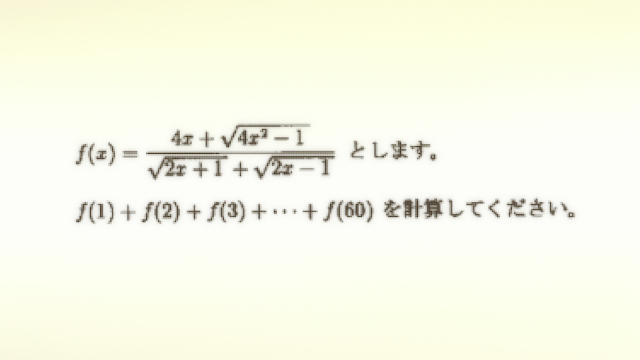The Largest Hint (2.2)
This post is the second one in the series on Terry Tao's "Solving Mathematical Problems". As usual for my posts though, I'll start by giving my opinion on something, in this case "hints".
If a book like this one doesn't include solutions, I think it's perfectly fine to give some hints to help readers. However, hints can potentially have two harmful consequences: giving away the answer or influencing the reader's thinking process a bit too much, perhaps getting them too fixed into following a certain path.
Given this, I think they should be hidden from the problem itself, maybe they should be placed at the end of the book. It takes some willpower that I do not posses not to read them when they're right after the question itself!
You can probably guess why I'm talking about this, so let's get to the problem:
In the first problem of the book, the hint was vague enough to not reveal a lot, and it was broad enough so as to not direct my strategy. In this case though, the hint is way too strong and gives away the solution way too easily imo.
In any case: it's there, I can't unsee it, let's use it!
For $n$ to be a number such that $n+10$ divides $n^3+10$, it must verify:
$$n^3+100 \equiv 0 \ [n+10]$$
We know from the hint that $n \equiv -10 \ [n+10] \ \implies \ n^3 \equiv -1000 \ [n+10]$.
Replacing on the previous equation:
$$900 \equiv 0 \ [n+10]$$
(I multiplied both sides by $-1$ to get rid of the negative on the $900$)
We're already close to the end! The above implies that $n+10$ is a factor of $900$, and so we can rewrite this as:
$$ 900 = k(n+10) \ , \ \ k \in \mathbb{Z}^+$$
We want to maximize $n$, so $n+10$ must be as big as possible. The biggest factor of $900$ is $900$ itself, so:
$n+10 = 900$
$\color{blue}{n = 890}$
 |
| Like being a police officer that has to finish the work after the genius detective found the key to the mystery |
As you can see, I wasn't lying when I said the hint was a bit too helpful. Knowing which mod to use, what to get rid of, and how to get rid of it simplified my work to the point that finding the solution wasn't an "Eureka" moment. (So much so that even as I write this, I feel like I made a critical mistake/missed something big.)
However, we must keep in mind that this book is not supposed to be a compilation of problems; it's a book on problem-solving with a relatively broad target audience. Rather than just judging from my point of view, a better question would be: "Is the hint too much, even for the general reader?" (general reader still being someone with a fairly big interest in math)
The answer to that is yes in my opinion. To put it in context, this exercise comes after the following example:
Terry proceeds to show us how to use mods to solve this Diophantine equation and the reasons one may want to pick a particular mod over another. After this example, I think an average reader would realize that a wise strategic goal in exercise 2.2 could be to get rid of the $n$ to force it to verify certain cases. In addition, since the problem is about divisibility by $n+10$, sooner or later even someone scared of "weird" mods would consider the value of the expression (mod $n+10$). These two together would have been enough to put us at the start of my solution.
Of course, one would need to take more time to digest the example and then to think on how to apply something similar to the problem at hand; I'm not saying it would be obvious. Since I read the hint I'm also not sure how much longer it would have taken me to solve the exercise without it.
This is indeed a nice problem, but a lot of its charm was revealed beforehand. Hopefully the next ones won't have hints this strong!




Comments
Post a Comment